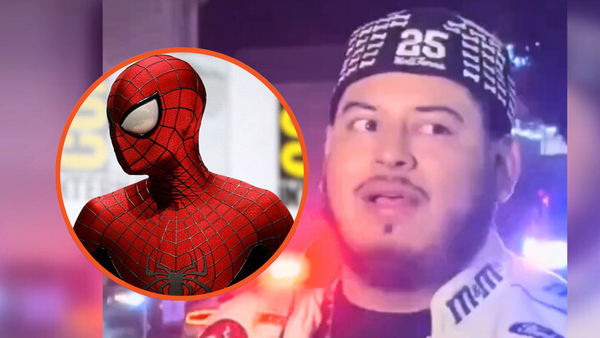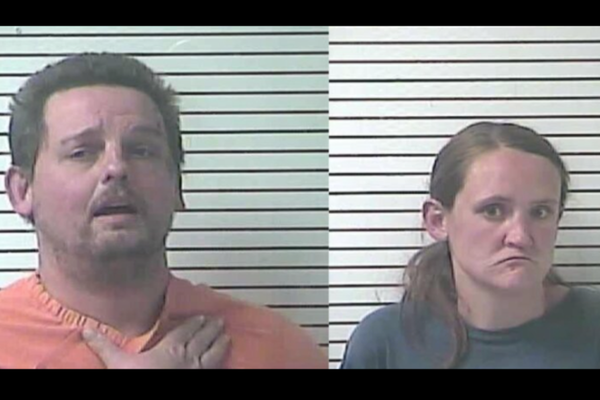
Windsor will be the final resting place of the Queen, in the George VI Memorial Chapel inside the grounds of Windsor Castle, said to be her favourite home, and where she will be buried alongside the Duke of Edinburgh.
If the state funeral is the nation’s goodbye, the committal service at St George’s Chapel will have a more personal air, with the congregation including many of those loyal staff, past and present, who worked for her at her homes and estates.
Around 800 people are expected to attend the service, during which highly symbolic moments will signify the end of Queen Elizabeth II’s reign as monarch.
The instruments of state, the Imperial State Crown, the orb and the sceptre, will be removed from her coffin by the crown jeweller and, with the bargemaster and serjeant-at-arms , will be passed to the Dean of Windsor, who will place them on the altar of St George’s Chapel. They will later be transferred back to the safe keeping of the Tower of London.
At the end of the final hymn, the King will place the Queen’s company camp colour of the Grenadier Guards on the coffin. The Grenadier Guards are the most senior of the Foot Guards regiments and the Queen was their colonel-in-chief.

At the same time, the Lord Chamberlain, the most senior official in the royal household, will ceremonially “break” his wand of office, the white staff that is one of the symbols of his office, and place it on the coffin. It signifies the end of his service to her as sovereign. The current Lord Chamberlain is former M15 spy chief Baron Parker of Minsmere. The last time this tradition was executed was in 1952, over George VI’s coffin.
As the coffin is lowered into the royal vault, the Commendation before Garter King of Arms will pronounce the styles and titles of the Queen.
The tiny King George VI Memorial Chapel houses the remains of the Queen’s father, George VI, her mother, the Queen Mother, and sister, Princess Margaret. When Philip died 17 months ago, his coffin was interred in the Royal Vault of St George’s, ready to be moved to the memorial chapel when the Queen died.
At the end, as there was at the funeral of her husband, Prince Philip, the sovereign’s piper will play a lament from the doorway between the chapel and the Dean’s cloister, during which he will walk slowly towards the deanery in the cloister, so that the music inside the chapel gradually fades.
The Archbishop of Canterbury will pronounce the blessing, which will be followed by the singing of God Save the King.
Thousands are expected to line the streets to watch the cortege as the Queen’s coffin, in the state hearse, processes through the town.
During the ceremony, the Sebastopol bell will toll. Captured from the Church of the Twelve Apostles in Sevastopol in Crimea in 1856, it hangs in the Round Tower, and only tolls for the death of senior royals. The bells of the Curfew Tower at the Windsor Castle will also toll.
At 3.06 pm, the state hearse, having driven from London, will approach Shaw Farm Gate on Albert Road, Windsor, and join the procession.
At 3.10 pm, the procession will step off, following a route from Albert Road to St George’s Chapel, Windsor Castle, by way of the Long Walk, Cambridge Drive and the George IV Gate.
At approximately 3.40 pm the King and other members of the royal family walking in the procession will join in at the Castle’s Quadrangle. The procession will be led by a dismounted detachment of the Household Cavalry Regiment followed by a mounted Division of the Sovereign’s Escort, and massed pipes and drums.
Minute guns will be fired by the King’s Troop, Royal Horse Artillery from the Castle throughout the procession to the steps of St George’s Chapel.
Inside the chapel, the congregation will include governors general and realm prime ministers, as well as the Queen’s past and present personal staff. The Military Knights of Windsor, the honorary bodyguards, will be on duty.
The committal service will begin at 4pm with the coffin taken to the catafalque in the quire. The service will be conducted by the dean of Windsor, but prayers will be said by those from other churches that she regularly attended: the rector of Sandringham, the minister of Crathie Kirk, and the chaplain of Windsor Great Park.
A private burial service will be conducted at 7.30pm attended only by the King and family members, before Queen Elizabeth II is laid to rest together with her late husband, the Duke of Edinburgh, at the King George VI Memorial Chapel.







